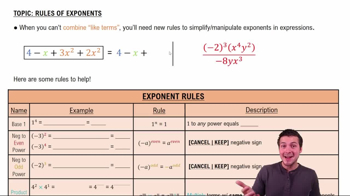Theory and Examples
Suppose that f is an odd function of x. Does knowing that limx→0+ f(x) = 3 tell you anything about limx→0− f(x)? Give reasons for your answer.
 Verified step by step guidance
Verified step by step guidance Verified video answer for a similar problem:
Verified video answer for a similar problem:



 6:47m
6:47mMaster Finding Limits Numerically and Graphically with a bite sized video explanation from Patrick
Start learning